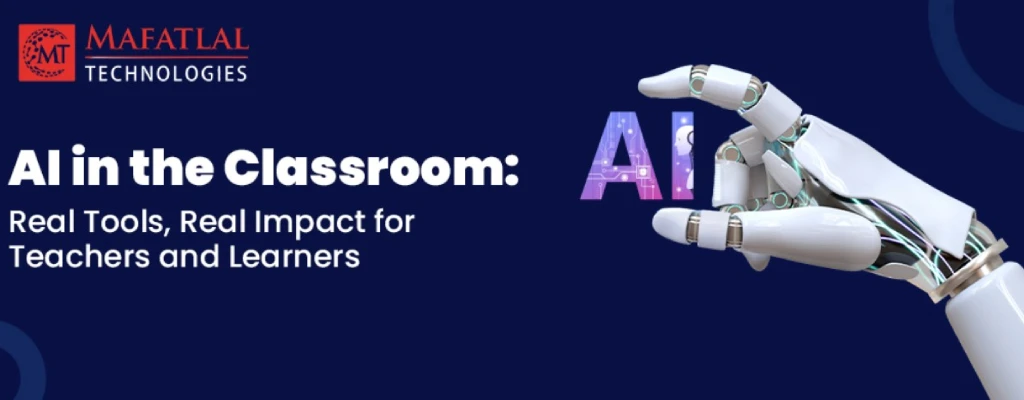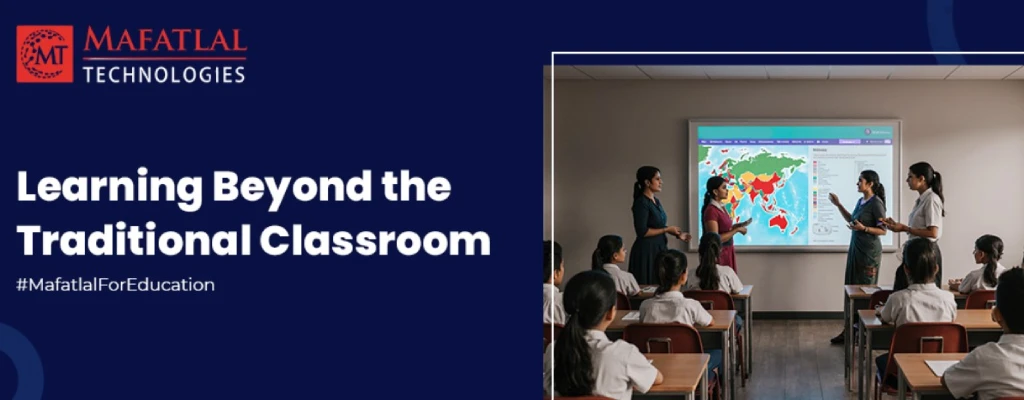
AI in the Classroom: Real Tools, Real Impact for Teachers and Learners
- Admin
Classrooms today are more diverse and complex than ever. Teachers juggle different learning styles, strive to keep students engaged, and work hard to ensure no one gets left behind.
The good news? AI is quietly making this easier.
But it’s not about replacing teachers. It’s about supporting educators while preserving the unique way of teaching. In fact, AI can reduce administrative workload, simplify lesson planning, and help teachers focus on teaching and meaningful student engagement.
The Real Challenges Inside Classrooms
Ask any teacher, and they’ll tell you: no two learners are alike. Some students grasp concepts quickly. Others need extra time or a different approach altogether.
In larger classrooms, this diversity—known as heterogeneous learners—makes one-size-fits-all teaching nearly impossible.
That’s where AI steps in, supporting personalized learning for heterogeneous learners and ensuring every student gets what they need to succeed.
In a school in Gujarat, for example, AI tools helped teachers track students who were quietly falling behind in maths. With early insights, they could step in with targeted support—before small gaps became big problems. As a result, students received timely help, regained confidence, and kept pace with the rest of the class.
AI-curated content, videos, 3D tools, and cross-curricular resources also help teachers with NEP 2020-ready dynamic lesson planning, reducing manual work while keeping learning engaging and inclusive.
Building a Dynamic, Inclusive Learning Space
A classroom works best when it's more than just a space for lectures. When students collaborate, question, and share ideas, it becomes a dynamic learning hub.
AI can support this by simplifying lesson planning, offering engaging resources, and creating more opportunities for a fluid exchange of ideas.
This happens through peer discussions, group projects, or digital platforms that make it easier for quieter students to share their thoughts.
In Kerala, one school found that digital discussion boards boosted participation from students who were hesitant to raise their hands in class, making learning more inclusive. Over time, these quieter students gained confidence and became more active contributors to group projects and class discussions.
Building on this, AI also helps teachers generate customized quizzes, class tests, worksheets, and projects with clear, step-by-step explanations—making learning more interactive and accessible for all students.
Keeping Teaching Personal and Human
A common worry among educators is that technology might dilute their teaching style. But with regulated AI that works in the background, teachers stay in control.
Whether they prefer storytelling, group work, or interactive discussions, AI helps preserve the unique way of teaching, providing resources and insights that complement their approach.
For one English teacher in Chennai, AI suggested extra reading materials tailored to her lesson. But how she wove those into the class discussion was entirely her own. She used real-life examples, encouraged open debates, and added her personal touch to make the lesson relatable for her students. AI provided the resources, but it was her teaching style that brought the classroom to life.
Smarter Planning, Less Stress for Teachers
Lesson planning and resource creation can be time-consuming. AI-assisted teaching platform simplifies this with dynamic lesson planning, offering suggestions, tools, and curated content aligned with the curriculum.
Teachers can also curate creative learning resources without spending hours searching for the right materials, making it easier to deliver engaging lessons that suit different learning styles.
For students, this means staying on a personalized and adaptive learning path with access to visual aids, interactive tools, and revision resources whenever they need them.

Learning Beyond the Traditional Classroom
Learning extends beyond the four walls of a classroom. A hybrid classroom setup, where lessons happen both online and offline—helps schools stay flexible.
AI ensures that whether students are learning in-person, remotely, or in a blended setup, they stay on track. It also supports self and peer learning, encouraging students to collaborate, review each other's work, and build critical thinking skills.
One school in Bengaluru used peer-feedback tools to help students reflect on assignments. It was a simple way to build confidence and communication skills.
Over time, teachers noticed a clear shift. Students became more comfortable sharing their ideas. They also developed stronger critical thinking and collaboration skills—essential for meaningful peer learning.
Improving Learning Outcomes, Not Just Grades
AI brings clarity to learning outcome evaluation, offering real-time progress insights for both students and teachers.
For principals and administrators, analyzing learning outcomes becomes easier. With timely insights, they can identify gaps, provide extra support, and make informed decisions to improve student learning outcomes across the school.
Tools like peer-graded evaluation also give students a voice in the learning process, making assessments more interactive, reflective, and student-focused.
By simplifying everyday tasks, supporting differentiated instruction, and encouraging collaborative, learner-driven classrooms, AI quietly helps schools align with NEP 2020 goals—while keeping teaching personal, practical, and impactful.
In Conclusion
The best AI doesn’t try to replace teachers. It respects them. It supports their unique teaching style, helps with everyday tasks, and makes sure each student gets the attention they deserve.
For educators, AI offers practical support: from personalized learning for heterogeneous learners, to fostering a fluid exchange of ideas, to simplifying learning outcome evaluation. And that’s when real change happens—in the classroom, for teachers, and for every learner.
If your school is exploring ways to make teaching more inclusive, NEP-ready, and manageable for educators, there are practical, real-world solutions available.
We’re always happy to share ideas and experiences with schools and educators committed to creating meaningful learning environments.
Let’s connect and exchange ideas. Send your inquiries to technology@mafatlals.com / Book a demo or call +91-22-6901 3918 for more information.
